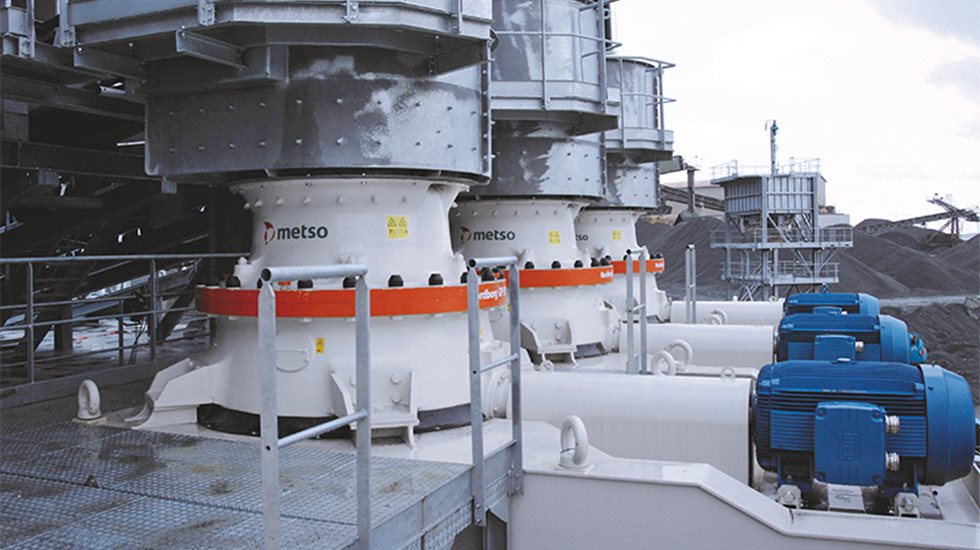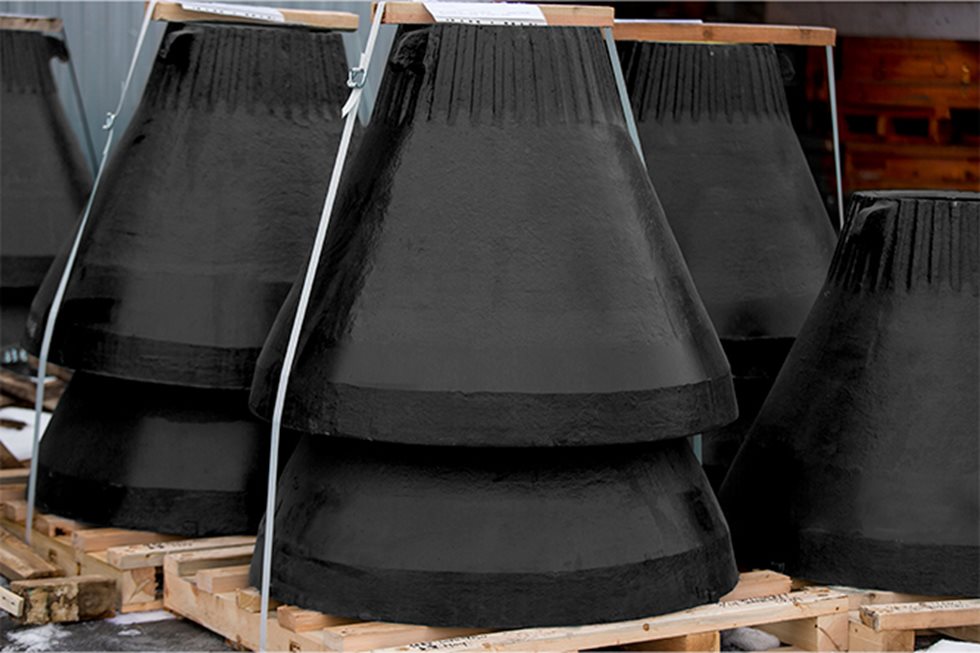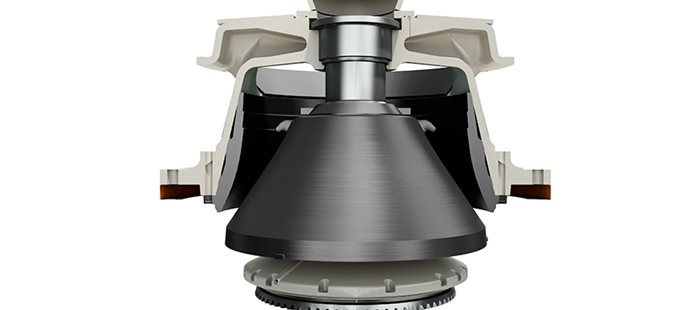Impact of the chamber thickness
Even though GP Series cone crushers and some of the newer HP crushers (e.g. HP200e, HP100, HP3, HP4, HP5, and HP6) do not use backing material, as HP200-HP500 crushers do, it still takes a bit longer to change liners in the GP Series cones than in the HP Series. The reason for this is because, in a GP cone, you have to lift the upper frame by opening the frame bolts. With HP cones, unscrewing the bowl from the mainframe is faster.
It is partly for this reason that the thickness of the wear parts for GP cones has been maximized because the lower g/ton liner wear compensates for the longer liner change-out time.
But sometimes with a GP crusher, you would like to operate with a bit larger CSS, and you notice the piston and the main shaft assembly along with the mantle are close to the bottom position with new liners. For example, in a GP220 with a new Extra-Coarse chamber installed with a 36mm stroke, the maximum CSS is ~30mm. If you would like to operate at, say, a 25mm CSS, there is not much tramp release distance available for an uncrushable object to go through. For those kinds of situations, we have the Extra Coarse – Large Setting (EC-LS) chamber available.
The mantle in this EC-LS chamber is slightly thinner than normal, allowing for a larger maximum CSS and thus more tramp release distance. Especially useful for the very common GP cone application are the two-stage Lokotrack® or NW Rapid™ mobile crushers with a Nordberg C-Series™ jaw and a GP Series cone. In these cases, the reduction ratio by “only” two crushers is typically quite high, and having a bit larger CSS with the GP cone helps improve material flow, capacity, and overall efficiency. If the maximum CSS you can reach with GP is the problem, EC-LS (sometimes called EC-TR “Tramp Release”) is the fix.



